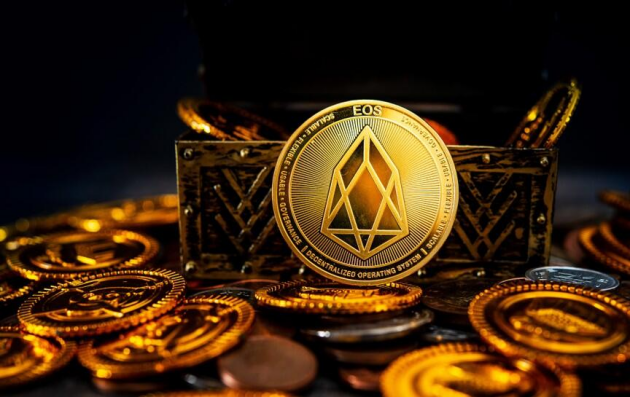 EOS is a blockchain-based platform designed to run decentralized applications (dApps) and smart contracts. It provides core functions such as secure access, identity verification, data hosting, and usage management, allowing dApps to communicate smoothly with the Internet. Unlike many other blockchain systems, EOS nodes are bound by a set of rules and authorizations called a "constitution", ensuring that each node is digitally signed and recorded on the blockchain.
EOS is a blockchain-based platform designed to run decentralized applications (dApps) and smart contracts. It provides core functions such as secure access, identity verification, data hosting, and usage management, allowing dApps to communicate smoothly with the Internet. Unlike many other blockchain systems, EOS nodes are bound by a set of rules and authorizations called a "constitution", ensuring that each node is digitally signed and recorded on the blockchain.
The goals and potential of EOS
EOS is designed to support commercial-scale decentralized applications, and enterprises can build blockchain applications in a manner similar to web-based applications. Although EOS appears to have huge potential, it is still in its infancy. There have been doubts about its claimed 100,000 transaction speeds per second, while the requirement that users hold EOS tokens to complete transactions may also undermine its appeal.
As of February 2020, EOS has become one of the 20 blockchain tokens with the highest market capitalization and is managed by the block.one organization. The founder, Dan Larimer, has also founded mature platforms such as Bitshares and Steem.
EOS Price Trend and Forecast
At the beginning of 2021, the price of EOS was $2.63, but by May the price surged to $12. Despite this, experts generally believe that the price of EOS will not reach $1,000 in the short term. CoinPedia predicts that the price will reach $18 to $24 by the end of 2021, and may reach $45 in 2022. While WalletInvestor believes that the price of EOS will not exceed $14 by the end of 2025, Digitalcoin expects the price to be between $19 and $24.
Understand the differences between EOS tokens and EOS.IO: The EOS ecosystem consists of two key elements: EOS.IO and EOS tokens. EOS.IO is similar to a computer operating system that manages and controls the EOS blockchain network. It uses blockchain architecture for vertical and horizontal scaling of dApps. EOS tokens are the cryptocurrency of the EOS network. Developers only need to hold EOS tokens to use network resources without spending money.
The unique advantages of EOS
EOS is designed to solve the pain points of traditional blockchain systems such as speed, scalability, and flexibility. By processing large numbers of transactions in parallel, EOS is able to provide higher transaction speeds. In addition, its ownership structure eliminates transaction fees and users use resources in proportion to their shares, allowing application developers to better predict hosting costs.
EOS uses the Delegated Proof of Stake (DPoS) mechanism to allow stakeholders to reach consensus on high-level decisions, such as backtracking and error repair. This flexibility makes EOS great at responding to changes.
EOS.IO Features and Functions
EOS.IO claims to be able to support thousands of commercial-scale dApps without encountering performance bottlenecks. Its unique modular design separates the certification process from the execution process, thereby improving efficiency. EOS.IO also provides a wealth of development tools, including web toolkits, to help developers build and maintain applications more easily.
In addition, the ownership structure of EOS allows users to use network resources for free, and developers can use resources in proportion to their shares rather than paying per transaction, which provides more flexibility for monetizing applications.
EOS Economic Model and Inflation
The economic model of EOS does not use traditional mining methods. Instead, block producers generate new blocks and receive rewards. This mechanism ensures that the total annual increase in the token supply does not exceed 5%. Token holders have the right to vote on whether to allow block producers to demand more inflation, thus maintaining the stability of the network.
Unique approach to token distribution: EOS took a novel approach during its initial coin offering (ICO). 200 million tokens were initially distributed, followed by 2 million tokens per day for the next 350 days to ensure widespread dissemination of the tokens in the ecosystem and avoid giving an undue advantage to a few in the short term.
in conclusion
As an emerging blockchain platform, EOS has shown great potential with its unique design concept and economic model. Despite challenges such as price fluctuations and market competition, EOS still attracts the attention of many investors and developers. With the continuous advancement of technology and the gradual improvement of the ecosystem, EOS is expected to occupy a place in the future blockchain field.